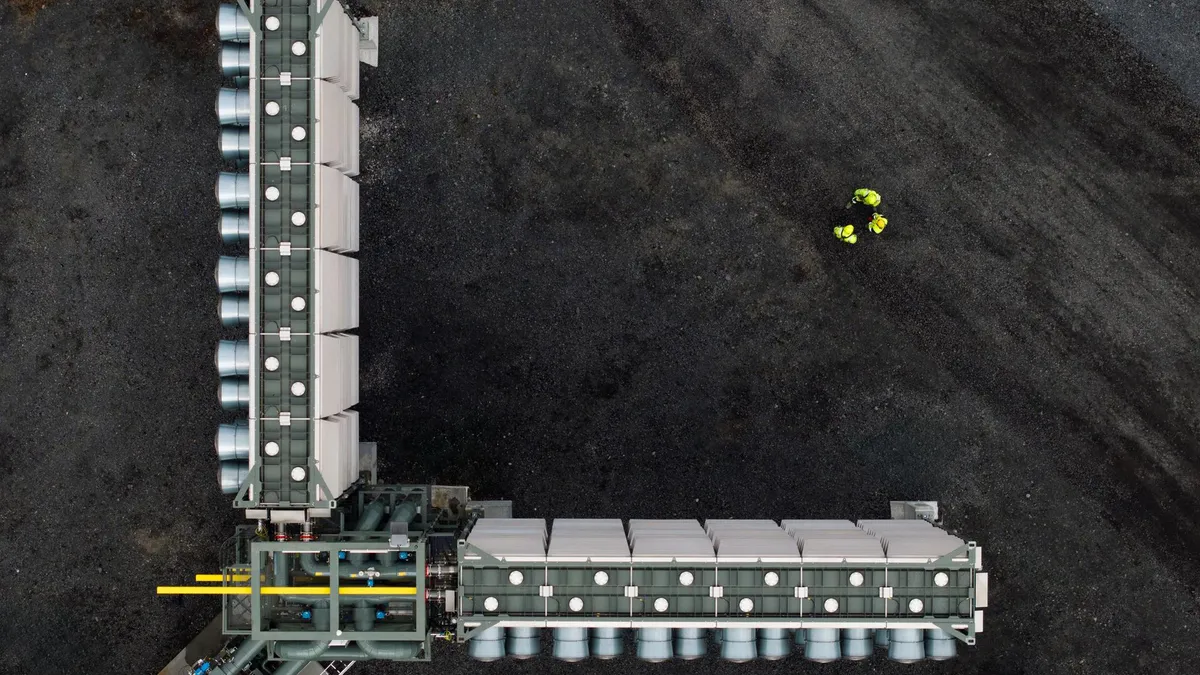Matt Welch is state director at Conservative Texans for Energy Innovation.
We all know Texas is the energy capital of America, and we know that our ability to lead the country in so many types of energy production — oil, natural gas, wind, solar, battery storage and soon geothermal — is often in spite of federal regulations that are designed to delay and obstruct.
Thankfully, the incoming Trump administration has pledged to overhaul the federal bureaucracy and speed up permitting. President-elect Trump’s nomination of Lee Zeldin to lead the U.S. Environmental Protection Agency could restore sanity to an agency that is holding back billions of dollars in new investment — including the fast-growing carbon capture industry.
Capturing and sequestering carbon dioxide in the ground is not a new concept. Texas oil producers pioneered the process and have been capturing and injecting CO2 in the oilfield to coax more oil out of the ground for over 50 years. Now industry wants to expand that and permanently store CO2 in deep underground formations, in what are known as “Class VI” wells. Unsurprisingly, many Texas energy companies are proposing to spend big bucks to make this happen.
The hurdle to doing so isn’t lack of funding or infrastructure. It’s the federal red tape.
Carbon capture leverages all the best that Texas has to offer — favorable geologic formations, well established infrastructure and pipelines, a highly trained workforce and a thriving energy sector. Carbon capture can unleash $60 billion in private investment and create more than 18,000 jobs annually in Texas alone. The Texas Association of Business closely studied the economic impact of carbon capture and estimated that construction and operations would generate $33.4 million in county tax revenues, which would support essential local services across the state.
The icing on the cake is that all of this investment would also prevent millions of tons of CO2 from being emitted. It’s the definition of win-win.
Unfortunately, the EPA oversees the permitting for Class VI wells, and they haven’t issued very many permits. More than 150 applications for Class VI wells currently sit with the EPA, a more than 100% increase from last year. Since President Biden signed the Inflation Reduction Act in 2022 — a law that the administration hoped would accelerate carbon capture and storage investment — the Biden EPA has only approved two permits. EPA’s inaction is stalling billions of dollars in private investment and thousands of new jobs.
But there is a better way: the EPA can delegate the oversight authority to states, known as “primacy,” which would streamline the permitting process. Currently, only three states have received primacy — Louisiana, North Dakota and Wyoming, and nine states are still in the queue. Texas began that process back in 2022.
The reason state primacy exists in the first place, established under the federal Safe Drinking Water Act, is because states are often better positioned to oversee energy development projects in their backyards. Texas regulators have more experience and knowledge in subsurface geology and drilling wells than the EPA.
If more states were granted primacy from the EPA, Class VI applications would be reviewed at the appropriate state-level jurisdiction, which, logically, would improve the overall timeline, allowing projects to progress and bring tangible benefits to communities and states. When it comes to building our economy, speed matters.
A survey last year from Conservative Texans for Energy Innovation showed that 68% of Texans — including two-thirds of conservative voters — are in favor of expanding CCS technology. Texans understand the economic opportunity that carbon capture brings, and so do our state leaders.
We don’t need a new act of Congress or regulatory mandate to unleash the CCS opportunity. We just need someone to clear the regulatory backlog at EPA and let Texans get to work.














